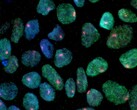With the help of an AI model, a team of scientists has come up with a new way of toughening plastic. The team — made up of researchers from MIT and Duke University — used a machine learning model to discover an additive that, when used with a polymer, makes it become much more resistant to tearing.
The discovery was published in ACS Central Science on August 1. The foundation of this discovery lies in a counterintuitive discovery contained in a study published earlier — incorporating weak links into a polymer's chemical structure can make the material stronger overall. This is because a propagating crack is forced to break many more of these weak bonds instead of tearing through a uniform material, thereby dissipating more energy. However, the researchers had a big challenge to overcome — picking the perfect 'weak link' among thousands of potential candidates.
To solve this problem, the researchers employed a machine learning model. They trained the model on computational data from about 400 iron-containing compounds called ferrocenes. The resulting model was able to predict the properties of thousands of other ferrocenes in a short while, picking out the best candidates.
The researchers then synthesized a plastic using one of the AI's top picks, resulting in a polymer four times tougher than polymers made with a standard crosslinker.
If you make materials tougher, that means their lifetime will be longer. They will be usable for a longer period of time, which could reduce plastic production in the long term. — Ilia Kevlishvili, the study's lead author.

























